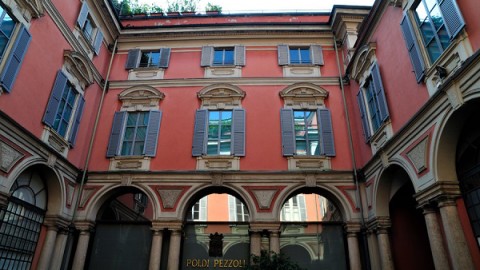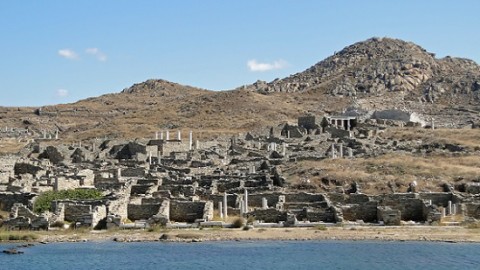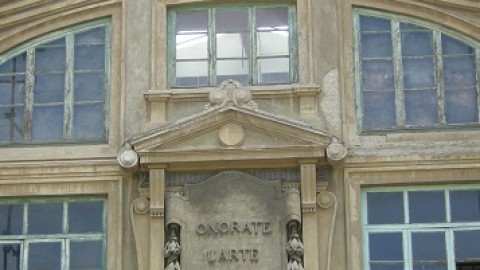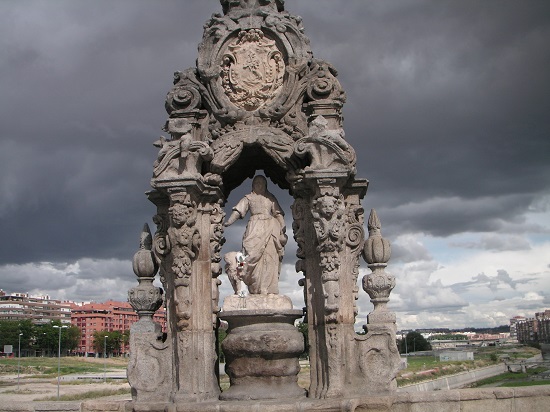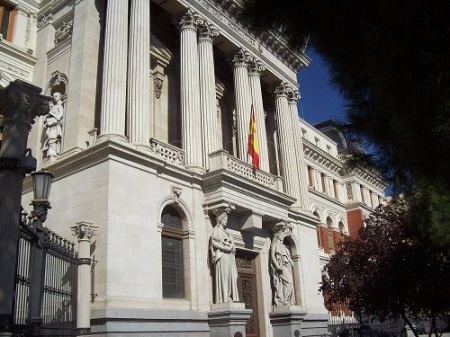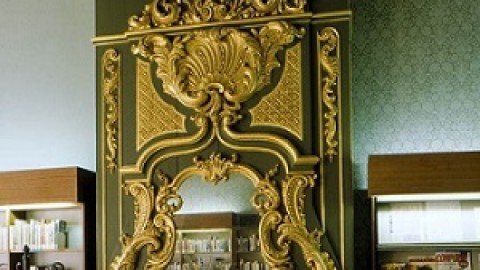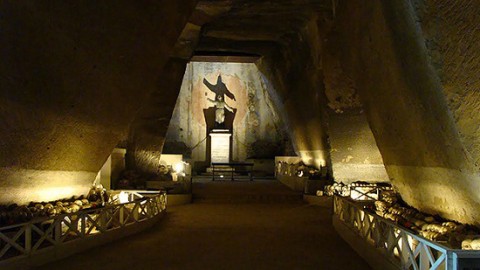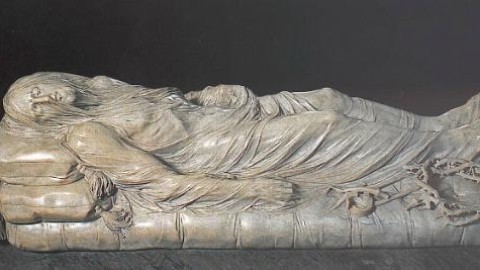The Portinari Chapel was built in the years 1462-1468 for the Florentine banker Pigello Portinari, the Milan agent of the Medici Bank. It is considered to be a masterpiece of the Lombard Renaissance and its frescoes, by Vincenzo Foppa, recount the life of the Dominican St Peter Martyr (1205-1252), also known as Peter of Verona.
The famous monumental tomb of St Peter Martyr in this sublime Chapel, by the master sculptor Giovanni di Balduccio, within the Basilica of Sant’Eustorgio is borne up by eight female figures. It is not often noticed that each of these rests on the animal, some of them mythological. Both the female figures and the animals depict the virtues that the soul should cultivate for its own spiritual health.
Justice is shown with a sword and a pair of scales (broken at some point) and rests on dogs that symbolise “Watchdogs of the Faith” and refer to the phrase domini cani (Hounds of the Lord) which was often given as the meaning of the name of the Dominican Order to which St Peter Martyr belonged.
Temperance is shown pouring water from one jar to another and rests on a figure that is half-human, half-animal; a sort of sphinx; this creature symbolises the point or moral separation between the human and the bestial.
Strength or Courage (Fortitude) doe snot have her usual symbol of a tower but holds a rose-window-like-disc against her chest with her hands crossed; this symbolises heavenly virtue. The lions on which she stands represent the spiritual power that has been established upon the world.
Prudence (Sapientia) has two faces, one in front and one behind. She is holding a book and observing a small object which in undoubtedly a mirror, reflecting wisdom and prudence.
Charity (Caritas) suckles two infants at her breast. This symbolises unconditional Love nourishing Humanity without reserve. The figure rests on two dogs that symbolise tenderness and affection.
Faith (Fides) holds a cup in her left hand and a cross in her right, thus expressing faith in the spiritual and bodily salvation to be found within the bosom of the Church thanks to its sacrament of the Eucharist, represented by the cup/chalice. She stands on two dogs that defend her.
Hope (Spes) does not have her usual anchor but rather holds a bunch of flowers. These symbolise the openness to the influence of God which generates a perfume of hope, the ultimate virtue for humanity as it passes through this world of pain and suffering. She is borne up by two gryphons, which in medieval iconography symbolised the dual, human and divine, nature of Christ.
Obedience holds the closed book of The Rule and the cord associated with monastic orders. She is borne up by two lions that symbolise how the obedience of the Just is rewarded in Heaven; the Lion was an earthly symbol of the spiritual sun of celestial Paradise.
This really is an extraordinary sculpture in a truly beautiful Chapel and you must visit next time you are in Milan.
The virtues are usually divided into two groups: the theological, which originate in and draw upon the Holy Spirit as revealed through Faith, Hope and Charity, and the cardinal. These latter are the main virtues implicit within humanity itself: Justice, Prudence, Strength [or Courage], Temperance and Obedience [either to the monastic Rule or to social order].


